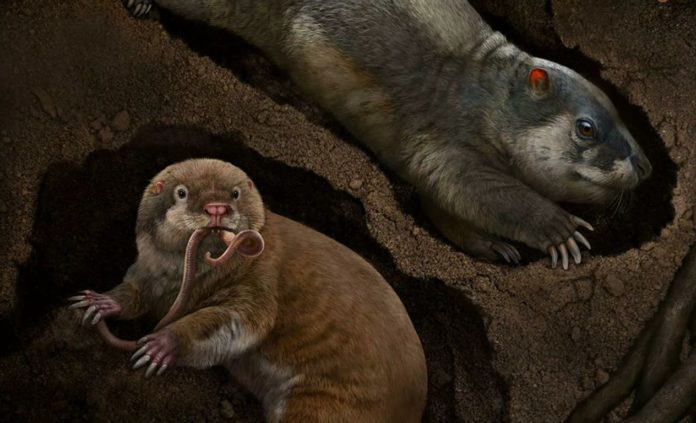Before an asteroid forever changed the course of evolution on our planet, numerous dinosaurs lived on Earth and, according to new research, precursor animals of modern mammals, which lived in burrows that they dug in the ground.
The new study provides details about two recently identified species. The first one is a reptile named Fossiomanus sinensis; the second, a mammal called Jueconodon cheni. The remains of both animals were found in the region that is now northeastern China and date to approximately 120 million years ago.
- Does This Mean We Stopped Being Animal and Started Being Human Due to ‘Copy Paste’ Errors?
- The One Lifestyle Choice That Could Reduce Your Heart Disease Risk By More Than 22%
- Aging: This Is What Happens Inside Your Body Right After Exercise
- Immune-Boosting Drink that Mimics Fasting to Reduce Fat – Scientists ‘Were Surprised’ By New Findings
- Gun Violence in America: What They Don’t Talk About at the Debate
While F. sinensis was a mammal-like reptile of an extinct group called tritylodontids, J. cheni was of the order of the also extinct eutriconodonts. The latter were evolutionarily close to the common ancestor of modern-day marsupials and placental mammals, Gizmodo details.
Both animals, which were less than about a foot long, were burrowers, a striking feature, according to the study authors.
“Each of the two represents the only known digging species in its own group (tritylodontids and eutriconodontans, respectively); in other words, the other members of their own group do not dig,” said Jin Meng, study author and museum paleontologist American of Natural History in New York.
Researchers do not know for sure the reason behind this behavior in the animals in question. Some of the factors that may have contributed to the underground lifestyle of F. sinensis and J. cheni are, according to Meng, hiding from dinosaurs and other predators, staying warm or cool at different times of the year, and foraging for food.
The fact that both animals, which were not closely related, although they coexisted, spent much of their time in burrows suggests that this was an efficient way to survive in the prehistoric ecosystem.
Another curious characteristic shared by these animals is the fact that they had elongated vertebral columns. The tritylodontid had 38 vertebrae, while the eutriconodontium had 28. For comparison, Gizmodo emphasizes, mammals typically have 26 vertebrae from neck to hip.
“Animals that live in burrows tend to have more vertebrae, probably to make their body more flexible so that they can make turns back and forth in the narrow burrows,” Meng said.
The study authors suggest that the largest number of vertebrae in the discovered species could be attributed to genetic mutations in the early stages of embryonic development. However, due to its age, it is difficult to give a definitive answer to this genetic question.
Extinct millions of years ago, F. sinensis and J. cheni highlight the great variety of fauna on our planet during the Cretaceous beyond the dinosaurs that people often remember when talking about this period.
- Does This Mean We Stopped Being Animal and Started Being Human Due to ‘Copy Paste’ Errors?
- The One Lifestyle Choice That Could Reduce Your Heart Disease Risk By More Than 22%
- Aging: This Is What Happens Inside Your Body Right After Exercise
- Immune-Boosting Drink that Mimics Fasting to Reduce Fat – Scientists ‘Were Surprised’ By New Findings
- Gun Violence in America: What They Don’t Talk About at the Debate
The study detailing the discovery of the two new species was published in the scientific journal Nature on April 7.
